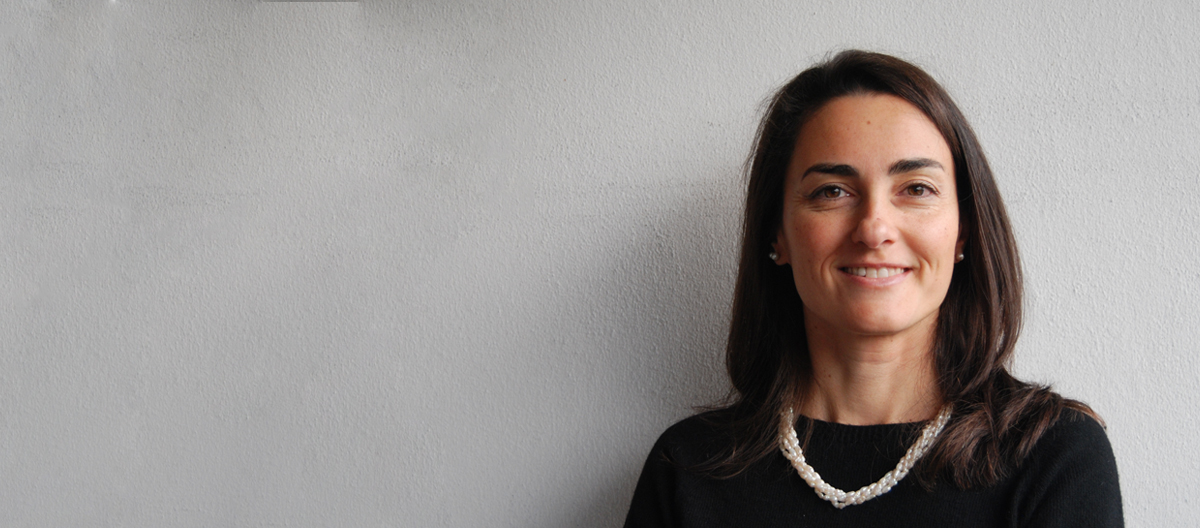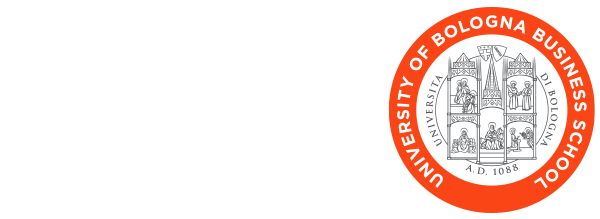
“Educating for Diversity and Inclusion for a new vision of business success”
18 November 2021Interview with Daniela Bolzani, Senior Assistant Professor in Management at the University of Bologna and Director of the Open Program BBS in Diversity & Inclusion.
Working in any organization today involves constant interaction with diversity. Yet the opportunities and paths for acquiring the skills needed to manage diversity are still few and often offered by non-academic organizations, thus potentially lacking strong research- and theory-based approach to allow meaningful and critical practical applications. The new Open Program in Diversity & Inclusion developed by Bologna Business School aims to fill this gap, which constitutes a new challenge towards innovation, especially for Italian companies. We asked Daniela Bolzani, Director of the Program, to take stock of the topic and to explain why, today more than ever, it is essential to acquire a new awareness about these issues.
What does it mean in practice for an organization to be inclusive and mindful of diversity?
All organizations need to be aware of diversity and inclusion issues because they employ different people or have relationships with different people working in other organizations upstream or downstream in the value chain (e.g., suppliers, investors, beneficiaries, distributors, customers, end users).
When I say that people are different, I don’t just mean demographic characteristics such as gender or ethnicity, but many other even more latent diversities that organizations should get used to dealing with.
There are three ways in which organizations can understand diversity and inclusion actions: the first is overcoming discrimination in accessing job opportunities or career progression – thus intended as equal opportunities, for example through the introduction of affirmative action; the second is Diversity Management – meant as the recruitment and retention of human resources who identify with different identities because of their human and professional experiences and knowledge; the third is Inclusion – meant as a set of processes that incorporate differences into organizational practices so that diversity can realize its value – for example through practices based on research, sharing, equality and learning among different members of the organization.
These three approaches have evolved over time. The anti-discrimination approach emerged during the 1980s as strongly characterized by an ethical dimension, either pursued voluntarily by companies or imposed by government regulations (such as “quotas” for certain categories of male/female workers) based on social justice or civil rights considerations. The Diversity Management approach was developed in the 1990s and is still used in many contexts to emphasize the positive aspects of diversity for organizations: the contribution of different skills and expertise, new ideas, different working styles that can lead to the acquisition of new customers, the development of new products and the creation of a competitive advantage. However, no empirical evidence has been found to demonstrate a clear and unequivocal positive relationship between diversity and economic and financial performance. Moreover, many large companies have not made real progress in building a truly diverse workforce – just to exemplify, think about the presence of women or people of color on the boards and in the top management teams of multinationals in Western countries.
Instead, over the past 15 years, there has been a growing consensus that diversity must be accompanied by an organizational commitment to inclusion. For example, some authors have talked about a proactive and ongoing Managing FOR Diversity approach that creates an organizational culture in which people value and leverage individual diversity, or a Learning-and-effectiveness paradigm in which people are oriented to learn from diversity rather than marginalize or deny it. In summary, it is not only necessary to act on diversity in terms of “organizational demography,” but more importantly in terms of removing barriers which impede workers’ full participation and contribution.
This can be realized in several ways:
- creating a climate of trust, where people feel safe to express themselves freely;
- actively working to fight discrimination and subordination through understanding the systems of privilege and oppression in society, analyzing how these are replicated in the organizational culture, and implementing actions to remedy these situations;
- fostering greater diversity of behavioral and leadership styles so that diverse voices can be expressed and not subjected to expectations of conformity to dominant styles;
- making cultural diversity a resource for mutual learning, generating new knowledge and connections for and among people.
What are the “differences” and how do you recognize and value them?
When talking about diversity, it is of course easier to think of visible or “surface” dimensions such as gender, race, or age, but literature and practice has taught us to consider other more latent or deeper characteristics, such as differences in values, attitudes, and opinions. Theoretically then, there would be infinite dimensions of diversity. In practice, we often narrow our focus to a few of these, among which the most relevant may be: age, ethnicity/nationality, gender and gender identity, disability, socioeconomic status (or organizational role/function), race, religion, and sexual orientation.
However, one must be very careful in applying these categorizations since each person cannot be reduced to only one dimension of identity. Intersectionality is an important key to interpreting the processes of development of individual and collective social identities, based on different dimensions of diversity embodied by one person, and the consider the associated positions of power, privilege, and disadvantage within social relations.
In addition, the importance of these dimensions must be interpreted within a broader historical and socio-cultural framework (e.g., the ethnic dimension of diversity, exemplified by afro-american movements, has historically been more significant in the United States than in Europe). The definition of diversity is therefore constantly evolving.
How do you turn D&I practices into a competitive advantage for the company?
As mentioned above, the more rigorous literature tends to de-emphasize the direct relationship between diversity and economic and financial performance. From this point of view, more effort in terms of academic research is still needed and more collaboration with companies to collect this data would be desirable. Maximizing diversity in companies is not the magic formula per se: diversity must be managed in order to bear fruit. It’s not just a matter of increasing the number of people who are underrepresented, for example through recruitment policies targeted at specific categories, but also of assessing how the diversity brought in by these people introduces resources that enable the company to do its job better.
From my perspective, it’s wrong to keep asking ourselves whether the business case for diversity and inclusion is about increasing revenues or profits. We should change our perspective and ask ourselves to which extent the introduction of diversity and inclusion practices correspond to a broader vision of business success that relates to learning, innovation, creativity, flexibility, equality, work-life balance, and more broadly, human dignity and respect. This questions the real desire of company’s leaders and decision-makers to contribute to the creation of high-quality jobs with greater individual and team satisfaction, equal opportunities for all, and fairness in career prospects. It’s about challenging existing structures of power and privilege in favor of a broader consensus and greater appreciation of voices and experiences. A change that can only take place if all people are enabled to reflect on and discuss about the principles and processes of working in a company and about individuals’ differences, so as to understand that these differences are enriching and not frightening, to be laughed at, avoided or marginalized.
Let’s take a look at Italian companies. How are they doing in this regard and how and how much can they still improve?
There are no yearly systematic surveys available in Italy on this issue. According to Istat and UNAR, in 2019, about 21% of companies adopted at least one measure not required by law with the aim of managing and valuing diversity among workers related to gender, age, citizenship, nationality/ethnicity, religious beliefs or disability. Large companies (34%) are more engaged than smaller ones (20%).
The risk is that this issue gets addressed as an area approached through a “politically correct” stance. It is often the case that people are annoyed by this topic that they consider “unnecessary” because they have an introjected idea of “maximum openness to everyone”, free of prejudices. Most organizations, anyway, have not started any path of awareness about these issues and have not considered the cognitive and emotional commitment that it requires.
What do you expect from BBS’s new Open Program in Diversity & Inclusion and how important do you think education is in making a D&I journey more effective in the company?
The European Union has already warned us that one of the biggest challenges in implementing diversity and inclusion actions in the workplace is the lack of information and awareness of practices and issues on this topic. I believe that the value of an open program offered by a business school has two fundamental advantages over other initiatives offered by consulting or non-academic training institutions. The first is the possibility of providing a strong link with the theories – for example, managerial, sociological, political, and psychological ones – to which people interested in understanding this theme should necessarily refer; the second is the possibility of identifying the most rigorous methodological approaches to the theme.
This course was born from the strong desire to create opportunities for reflection, discussion, and direct practice for participants. The theoretical part involves the participation of instructors who are experts in various fields of diversity and inclusion (in addition to myself, Francesco Cattani, Graziella Priulla, Nicola Palmarini) and the practical part is extensive and takes the form of guests’ speeches from:
- strategic and D&I consultants (including the co-directors of the course, Gabriella Crafa of Diversity, and Marco Buemi of DNA, but also other companies such as Bain)
- legal consultants (Alberto Guariso)
- corporate guests (L’Oreal, Patagonia, Airbnb, Google, Hera)
- companies, think-tanks, and associations involved in the promotion of D&I in various fields (Valore D, Mygrants, Parks, Coor Down, Avanzi)
Another very innovative way in which we will address this issue is to provide an extensive part of training in project management, so that participants will be able to develop their own projects, which could then be submitted for funding, benefitting from different funding schemes that have recently emerged, for instance those offered by the European Commission.
If you’d like to learn more, check out the course program.
Bibliography
- Chavez, C. I. e J. Y. Weisinger (2008). Beyond diversity training: a social infusion for cultural inclusion, Human Resource Management, 47, pp. 331–350.
- Harrison, D. A., H. H. Price e M. P. Bell (1998). Beyond relational demography: time and theeffects of surface- and deep-level diversity on work group cohesion, Academy of Management Journal, 41, pp. 96–107.
- ISTAT e UNAR (2020). Il diversity management per le diversità LGBT+ e le azioni per rendere gli ambienti di lavoro più inclusivi. ISTAT, https://www.istat.it/it/files//2020/11/Diversity-e-inclusion-management-nelle-imprese-in-Italia-2019.pdf
- Plummer, D. L. (2003). Handbook of Diversity Management: Beyond Awareness to CompetencyBased Learning. Lanham, MD: University Press of America.
- Roberson, Q. M. (2006). Disentangling the meanings of diversity and inclusion in organizations,Group and Organization Management, 31, pp. 213–236.
- Thomas, D. A. e R. J. Ely (1996). Making differences matter, Harvard Business Review, 74, pp.79–90.
- Unione Europea (2005). The business case for diversity. Good practices in the workplace.Luxembourg: Office for Official Publications of the European Communities.https://op.europa.eu/en/publication-detail/-/publication/57e667e2-d349-433b-b21d-1c67fd10ebb1.
